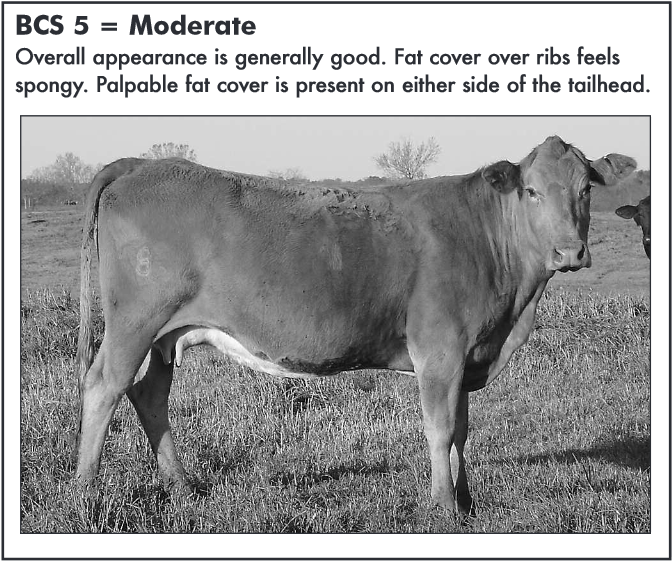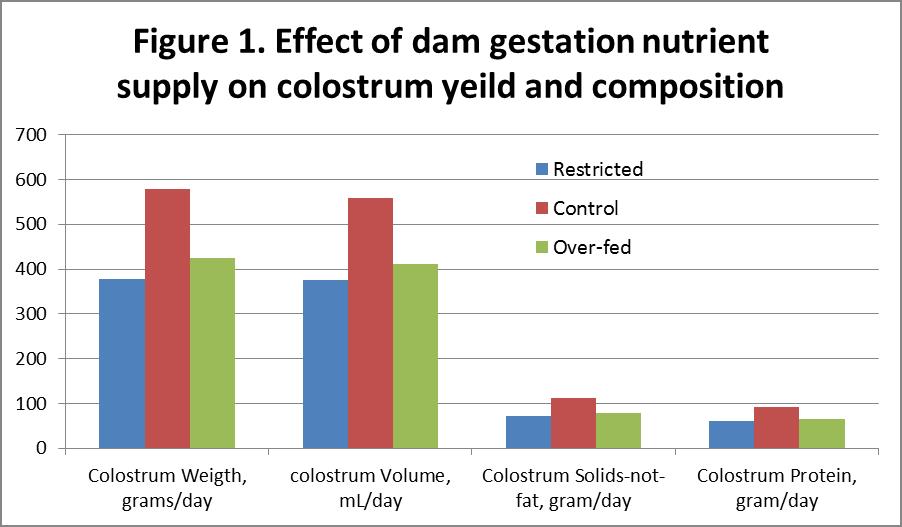
When it comes to the health of newborn calves, it all starts with the cow. The cow’s plain of nutrition and diet during gestation can affect her colostrum (first milk) production, milk yield, and the long-term health of her calf. Ensuring the cow receives sufficient nutrition during pregnancy by meeting her energy, protein, mineral, and vitamin requirements is an investment in the health of her calf.
Equally important is making sure the cow calves with a body condition score of at least 5 (neither fat nor thin). This ensures the cow will have enough body reserves to initiate lactation, form the colostrum, and produce adequate quantities of colostrum and milk, that impact the health of calves at birth and long term. If you’re not familiar with body condition scoring your cow herd, work with your local county Extension agent to learn and implement this important management tool.

Beef Cattle
Research in cattle and sheep has demonstrated that poor dam nutrition, either under- or over-feeding, can have negative effects on the colostrum volume, and on the concentrations of important components. The importance of the quality colostrum consumption by the newborn is that colostrum is the primary means of passing immunity from the mother to the calf. The immunity comes from two sources, immunoglobulins (IG) and other proteins in colostrum.
The protein and energy supplied to the cow during pregnancy are critical for colostrum production, immunoglobulin and protein concentration, and absorption of immunoglobulins by calves. Figure 1 shows the effect of under and over-feeding dams on colostrum volume and protein concentration. Colostrum weight, volume, solids-not-fat, and protein concentration were all negatively affected by under-feeding or over-feeding the cow during gestation. Mismanagement of the mother during gestation will result in a lactation that does not support health and growth of her offspring.

Mineral nutrition of the dam is often implicated in calf health. Cow blood status, as a predictor of calf blood mineral status at birth, is a poor predictor for copper and zinc, but the relationship is strong for selenium. However, after colostrum consumption, calf copper blood concentration can nearly double. Trace minerals are an important factor for many immunological functions and transfer through colostrum is important.
Newborn calves are born with essentially no functional immunity, so it must all come from absorption of immunoglobulin and other proteins in the colostrum. Calves need a good quality and adequate volume of colostrum as soon after birth as possible. The consumption of colostrum early in life is associated with improved survivability, disease resistance, and growth rate to weaning. There is a direct relationship between 24-hour colostrum intake of immunoglobulin-G from colostrum and serum immunoglobulin-G concentration. The more immunoglobulin rich colostrum a calf can consume, the greater the absorption and resulting serum immunoglobulin concentrations the calf will have. Circulating immunoglobulins are essential for mounting an immune response to disease in the calf.
Optimal absorption of immunoglobulins and immunity related proteins occurs at 4 hours after birth and begins to decline starting around 12 hours, ending around 24 hours after birth. If the dam doesn’t produce enough colostrum, or the calf is unable to consume an adequate amount of colostrum then a commercial colostrum replacer may be warranted. Make sure to use colostrum replacer and not a colostrum supplement. The concentrations of immunoglobulin and other components are not adequate in the supplement compared to a colostrum replacer product.
The calf’s long-term health is directly impacted by cow gestational nutrition. Adequate consumption of quality colostrum is the first step in calf immunity and long-term health. Be diligent to ensure calves receive colostrum because poor calf health will negatively affect the cow-calf producer’s bottom line.
For more information on this topic, download: Feeding Colostrum to Beef Calves
For more information on this and other topics related to beef cattle nutrition, please see the following list of UF/IFAS Publications here: Beef Cattle Nutrition
 0
0
